More About Farmhouse Life
In the days before electricity the fire was of the utmost importance. Not only did it heat the house, but it was also used to cook meals, bake oatcakes, scones and pancakes, boil water for washing and to heat the flat irons for ironing clothes. Though coal was burned in some homes it was more common to use peat here in the north east.
Peat was dug from the ground in "peat bogs." There were lots of peat bogs in the area but the biggest were at Rora, not far from Peterhead, and New Pitsligo.
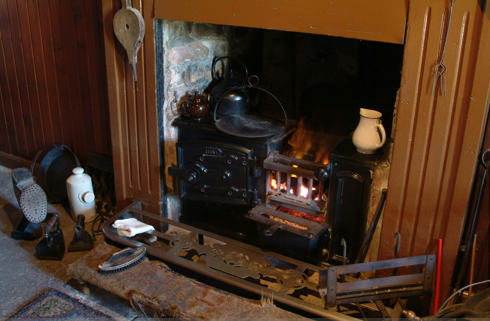
In this picture you can see a pair of bellows hanging at the side of the fire. The bellows were used to blow air into the fire. Peats were often damp which made it difficult to get the fire to light and blowing air into it helped.
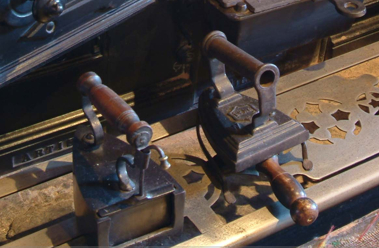
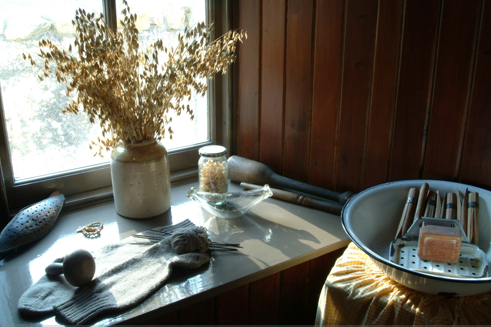
In the back corner of the window sill what looks like a club is actually a wooden tattie masher. On the sill lies a pair of socks with the darning stool which was used when darning any holes in the socks. On the left is the knitting needle holder which the women wore around their waists to hold their knitting needles. On the right we see an enamel basin with soap which would have been used to wash the clothes by hand, and a set of wooden clothes pegs to hang them on the line.
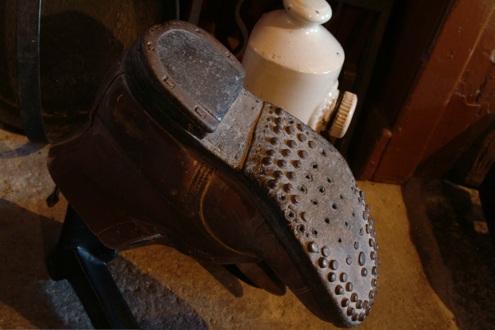
The stone hot water bottle sitting beside the boot was known as a "pig" because it had a handle like a pig's nose. On cold nights it would be filled with boiling water and placed in the beds to make them a bit warmer.
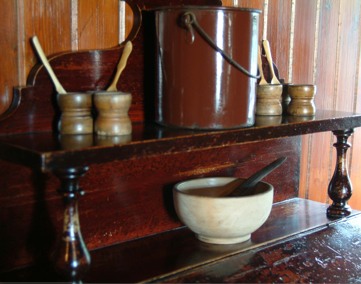
At the top of this picture, in the middle, we see a brown enamel milk pail. This was used to carry milk from the cattle byre to the farm house or out to the fields where the men were working. On either side of it stand pairs of wooden egg cups with wooden spoons. Below the pail we see a wooden bowl which the farmer's wife or her "kitchie deem" would use for making brose.
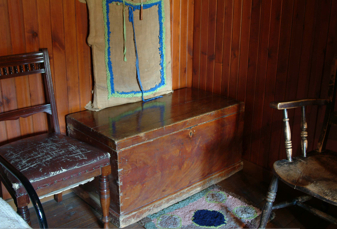
Rugs were made from cutting rags into strips then hooking them into a sack backing. Sitting on the kist or chest, is a rug in the process of being made and on the floor you can see one which has been completed.

In this picture you can see an oil lamp. There was no electricity in those days and light was provided by oil lamps or candles. They did not give off a very bright light so evening activities were limited.
How would you manage without electricity?

